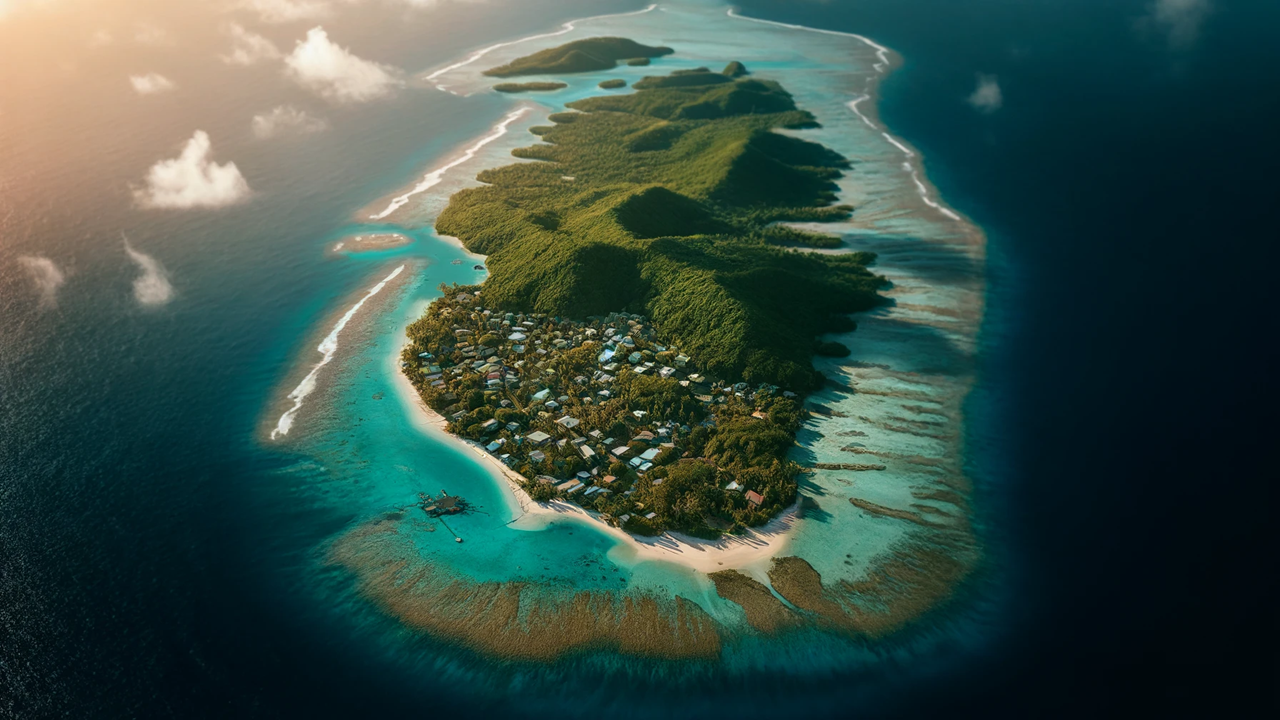Riding the Waves: How the Pacific Islands Are Building Resilience in a Changing World
The latest report from the Asian Development Bank (ADB) explores the Pacific Islands' ongoing efforts to strengthen economic resilience in the face of climate change, rising living costs, and post-pandemic recovery challenges. The report highlights initiatives in infrastructure, financial management, and social protection across the region, emphasizing the need for coordinated strategies to ensure sustainable development.

Building a Resilient Pacific
In the vast and vulnerable Pacific Islands, the struggle for economic stability and resilience is a daily reality. With the impacts of climate change growing more severe and the lingering effects of the COVID-19 pandemic still fresh, these small island nations are at the forefront of efforts to secure a sustainable future. The latest report from the Asian Development Bank (ADB), "Pacific Economic Monitor – August 2024: Building Resilience the Pacific Way," sheds light on how these countries are navigating these challenges with a mix of innovation, strategic planning, and international support.
Climate Change: The Looming Threat
For the Pacific Islands, climate change is not a distant concern—it’s a present danger. The report highlights the acute vulnerability of economies like the Cook Islands, Samoa, and Tonga to natural disasters exacerbated by climate change. Rising sea levels, more intense cyclones, and unpredictable weather patterns are already taking a toll on these nations' infrastructures, economies, and livelihoods.
In response, the Pacific Islands are investing in climate-resilient infrastructure and robust public financial management (PFM) systems. The Cook Islands, for instance, have launched several initiatives, including a National Climate Change Response Bill and the establishment of a Sovereign Wealth Fund. These measures are designed to build financial resilience against external shocks, ensuring that the nation can recover and rebuild more effectively after disasters.
Economic Recovery: Walking a Tightrope
Fiji’s journey of economic recovery offers a snapshot of the broader regional challenges. After a sharp downturn due to the pandemic, Fiji’s economy is slowly bouncing back, driven primarily by a resurgence in tourism. However, this recovery is fragile, constrained by high public debt and supply-side challenges. The ADB report details how Fiji’s latest budget is carefully balancing the need to reduce debt while fostering economic growth.
The government’s medium-term fiscal strategy includes increasing tax revenues, controlling expenditures, and prioritizing investment in critical sectors like health and education. These measures, while necessary, are a delicate act, requiring careful navigation to avoid stifling growth while addressing the country’s fiscal vulnerabilities.
The High Cost of Living: A Persistent Challenge
The Pacific Islands are also grappling with the rising cost of living, a challenge that threatens to undermine social protection measures. In countries like Kiribati, Niue, and Tuvalu, inflation has surged in recent years, driven by global commodity price hikes and supply chain disruptions. The ADB report reveals that in Kiribati, for example, inflation reached a staggering 25.1% in early 2023 before easing slightly later in the year.
To combat these pressures, governments are expanding social protection programs. Kiribati has introduced unemployment benefits and a copra price subsidy to support household incomes. However, the effectiveness of these programs is often limited by the small size and remote location of these economies, which face high transportation costs and dependency on imported goods.
Coordinated Efforts for a Sustainable Future
The ADB’s report underscores the importance of coordinated efforts across the Pacific region to build resilience. Whether it’s through investing in infrastructure, enhancing public financial management, or expanding social protection, the report calls for a comprehensive approach that integrates economic, social, and environmental strategies.
For these small island developing states, the road ahead is challenging, but not insurmountable. With the right policies and international support, the Pacific Islands can continue to ride the waves of change, building a more resilient and sustainable future for their people.
- FIRST PUBLISHED IN:
- Devdiscourse
ALSO READ
Reviving DAMUs: A New Framework for Farmers' Climate Resilience
Gadkari's Aerial Review of Indore-Hyderabad Corridor: Speeds Up Infrastructure Development
Transforming Rural Zimbabwe: Weir Dam Initiative Improves Water Access, Livelihoods, and Climate Resilience
Spain Raises Debt Ceiling to Propel Economic Recovery
IAEA Launches New Regulatory Infrastructure Development Project to Boost Radiation Safety and Nuclear Security in Asia-Pacific










